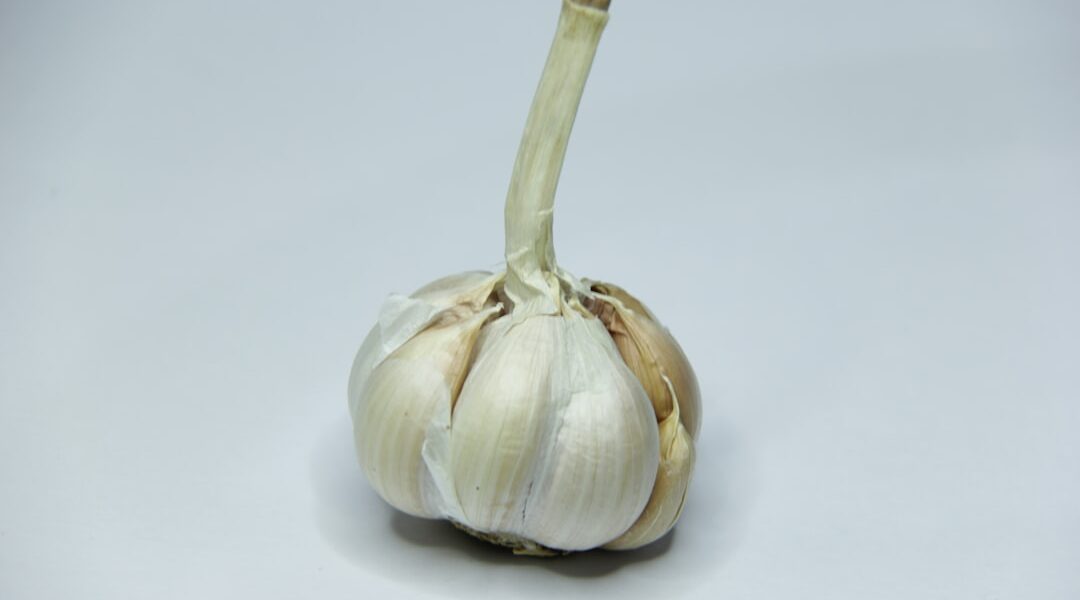Garlic mustard (Alliaria petiolata) is a biennial herb native to Europe and Asia, introduced to North America by early European settlers for culinary and medicinal purposes. This member of the mustard family is characterized by heart-shaped leaves, small white flowers, and a garlic-like odor when crushed. In North America, garlic mustard is considered an invasive species due to its ability to rapidly colonize forest floors and outcompete native plants.
Despite its invasive nature, it remains a valuable and versatile herb with a long history of use in cooking and traditional medicine. The plant’s pungent and slightly bitter flavor makes it a popular ingredient in various dishes, including salads, pesto, dressings, and as a seasoning for meats and vegetables. Garlic mustard is also known for its nutritional content, being rich in vitamins A and C, as well as minerals such as calcium, potassium, and magnesium.
Traditionally, it has been used to address various health concerns, including digestive issues, respiratory problems, and as a natural diuretic. The combination of its distinctive flavor and potential health benefits makes garlic mustard a versatile herb suitable for incorporation into a wide range of culinary applications.
Key Takeaways
- Garlic mustard is a versatile and flavorful herb that can be used in a variety of dishes
- It is known for its numerous health benefits, including being high in vitamins A and C, and having anti-inflammatory properties
- Garlic mustard pesto is a delicious and easy way to incorporate this herb into your cooking
- A homemade garlic mustard salad dressing can add a unique and zesty flavor to your salads
- Garlic mustard can be used to add a tangy and aromatic flavor to roasted chicken, pasta, and other dishes
Health Benefits of Garlic Mustard
Antioxidant and Anti-Inflammatory Properties
Rich in antioxidants, garlic mustard helps protect the body from oxidative stress and reduces the risk of chronic diseases such as heart disease and cancer. Additionally, it contains compounds with anti-inflammatory properties, which can help reduce inflammation in the body and alleviate symptoms of conditions such as arthritis and asthma.
Vitamins and Minerals for Overall Health
Garlic mustard is an excellent source of vitamins A and C, which support healthy vision, skin, and immune function. The high vitamin C content also boosts the immune system and promotes collagen production for healthy skin and joints. Furthermore, garlic mustard is rich in essential minerals like calcium, potassium, and magnesium, which are vital for bone health, muscle function, and overall well-being. These minerals also play a crucial role in regulating blood pressure, maintaining electrolyte balance, and supporting nerve function.
Additional Health Benefits
The diuretic properties of garlic mustard can help promote healthy kidney function and reduce water retention. Its digestive benefits include stimulating appetite, aiding digestion, and relieving symptoms of indigestion and bloating. With its rich nutrient profile and potential health-promoting properties, garlic mustard is a valuable addition to a balanced diet.
Garlic Mustard Pesto Recipe

Garlic mustard pesto is a delicious and versatile condiment that can be used in a variety of dishes. To make garlic mustard pesto, start by gathering fresh garlic mustard leaves, pine nuts, Parmesan cheese, garlic, olive oil, and salt. Wash the garlic mustard leaves thoroughly and pat them dry with a paper towel.
In a food processor, combine the garlic mustard leaves, pine nuts, grated Parmesan cheese, minced garlic, and a pinch of salt. Pulse the ingredients until they are finely chopped. While the food processor is running, slowly drizzle in the olive oil until the mixture forms a smooth paste.
Garlic mustard pesto can be used as a spread on sandwiches or wraps, tossed with pasta, or drizzled over grilled meats or vegetables. Its bold flavor adds depth to dishes and can elevate simple ingredients. The pesto can be stored in an airtight container in the refrigerator for up to a week or frozen for longer storage.
This versatile condiment is a great way to incorporate the unique flavor of garlic mustard into your cooking.
Garlic Mustard Salad Dressing Recipe
| Ingredients | Amount |
|---|---|
| Garlic Mustard | 1/4 cup |
| Olive Oil | 1/2 cup |
| Apple Cider Vinegar | 1/4 cup |
| Honey | 2 tbsp |
| Salt | 1/2 tsp |
| Black Pepper | 1/4 tsp |
Garlic mustard salad dressing is a simple yet flavorful way to incorporate this herb into your meals. To make garlic mustard salad dressing, you will need garlic mustard leaves, olive oil, lemon juice, Dijon mustard, honey, salt, and pepper. Start by washing the garlic mustard leaves and patting them dry.
In a blender or food processor, combine the garlic mustard leaves, olive oil, lemon juice, Dijon mustard, honey, salt, and pepper. Blend the ingredients until they form a smooth and creamy dressing. This tangy and zesty dressing can be drizzled over mixed greens, roasted vegetables, or used as a marinade for grilled meats.
The combination of the pungent garlic mustard with the bright acidity of lemon juice creates a dressing that is both refreshing and flavorful. This homemade dressing is a healthier alternative to store-bought dressings that may contain added sugars and preservatives. By making your own garlic mustard salad dressing, you can enjoy the fresh flavors of this herb while reaping its potential health benefits.
Garlic Mustard and Lemon Roasted Chicken Recipe
Garlic mustard can be used to add depth of flavor to roasted chicken dishes. To make garlic mustard and lemon roasted chicken, start by preheating your oven to 375°F (190°C). In a small bowl, mix together minced garlic, chopped garlic mustard leaves, lemon zest, lemon juice, olive oil, salt, and pepper.
Place the chicken pieces in a roasting pan and rub the garlic mustard mixture all over the chicken pieces. Roast the chicken in the preheated oven for 45-50 minutes or until the chicken is cooked through and golden brown. The combination of the pungent garlic mustard with the bright citrusy flavors of lemon creates a deliciously aromatic dish that is sure to impress.
This simple yet flavorful recipe is perfect for a weeknight dinner or special occasions.
Garlic Mustard and Parmesan Pasta Recipe

Preparing the Garlic Mustard and Parmesan Pasta
Start by cooking your favorite pasta according to the package instructions. In a large skillet, heat olive oil over medium heat and add minced garlic and chopped garlic mustard leaves. Sauté the mixture for a few minutes until the garlic is fragrant and the garlic mustard leaves are wilted.
Combining the Ingredients
Add the cooked pasta to the skillet along with grated Parmesan cheese and toss everything together until the pasta is coated in the flavorful mixture. Season with salt and pepper to taste.
Serving Suggestions
This simple yet satisfying dish showcases the bold flavor of garlic mustard while allowing the nutty richness of Parmesan cheese to shine through. This dish can be served as a main course or as a side dish alongside grilled meats or roasted vegetables.
Incorporating Garlic Mustard into Your Cooking
Incorporating garlic mustard into your cooking not only adds unique flavor but also potential health benefits to your dishes. Whether you use it in pesto, salad dressings, roasted chicken dishes, or pasta recipes, this versatile herb can elevate your meals with its pungent and slightly bitter flavor profile. With its rich nutrient profile including vitamins A and C, minerals such as calcium, potassium, and magnesium, as well as potential medicinal properties such as anti-inflammatory and diuretic effects, garlic mustard is a valuable addition to a balanced diet.
By exploring different ways to use garlic mustard in your cooking, you can discover new flavors and expand your culinary repertoire. Whether you forage for fresh garlic mustard leaves or purchase them from specialty stores or farmers’ markets, incorporating this herb into your meals can add depth of flavor and potential health benefits to your dishes. From simple salads to hearty pasta dishes and flavorful roasted meats, there are countless ways to enjoy the unique taste of garlic mustard in your cooking.
So why not give it a try and explore the culinary possibilities of this versatile herb?
If you’re looking for more ways to incorporate garlic mustard into your cooking, check out this article on Freyja Agency for some delicious and creative garlic mustard recipes. From pesto to soups to salads, there are so many ways to enjoy this versatile and flavorful herb. Whether you’re a seasoned chef or just starting out in the kitchen, these recipes are sure to inspire you to make the most of this unique ingredient.
FAQs
What is garlic mustard?
Garlic mustard (Alliaria petiolata) is a biennial plant that is native to Europe and Asia. It is considered an invasive species in North America and is often found in woodlands, along roadsides, and in disturbed areas.
Can garlic mustard be eaten?
Yes, garlic mustard is edible and has a pungent, garlicky flavor. The leaves, flowers, and seeds of the plant can be used in cooking.
Are there any health benefits to eating garlic mustard?
Garlic mustard is high in vitamins A and C, as well as various minerals. It also contains compounds that have been shown to have potential health benefits, such as anti-inflammatory and antibacterial properties.
What are some popular garlic mustard recipes?
Some popular garlic mustard recipes include garlic mustard pesto, garlic mustard and potato soup, garlic mustard stir-fry, and garlic mustard salad. The leaves can also be used as a flavorful addition to sandwiches and wraps.
Where can I find garlic mustard?
Garlic mustard can often be found growing in wooded areas, along trails, and in other natural settings. However, it’s important to forage responsibly and ensure that you have permission to harvest plants from the area where you find them.
Are there any precautions to take when foraging for garlic mustard?
When foraging for garlic mustard, it’s important to positively identify the plant to avoid any potential look-alike species. Additionally, be sure to harvest from areas that have not been treated with pesticides or other chemicals.




